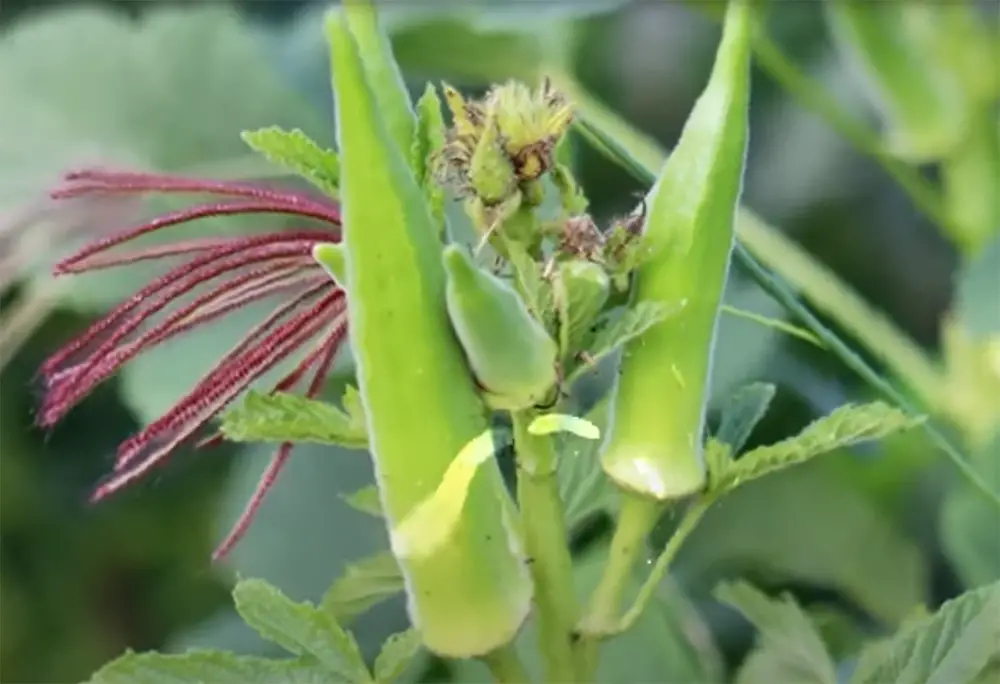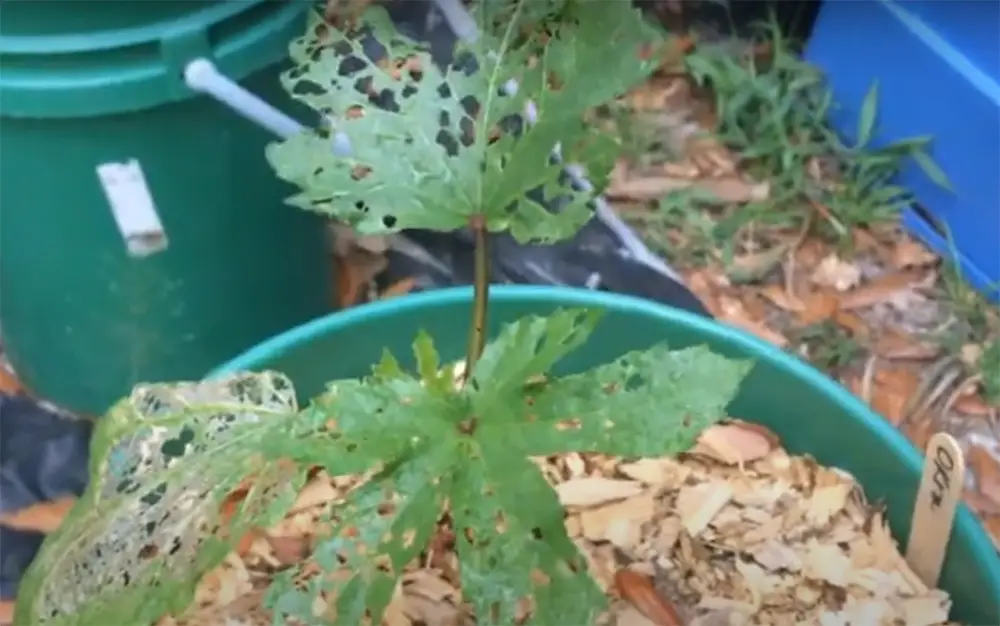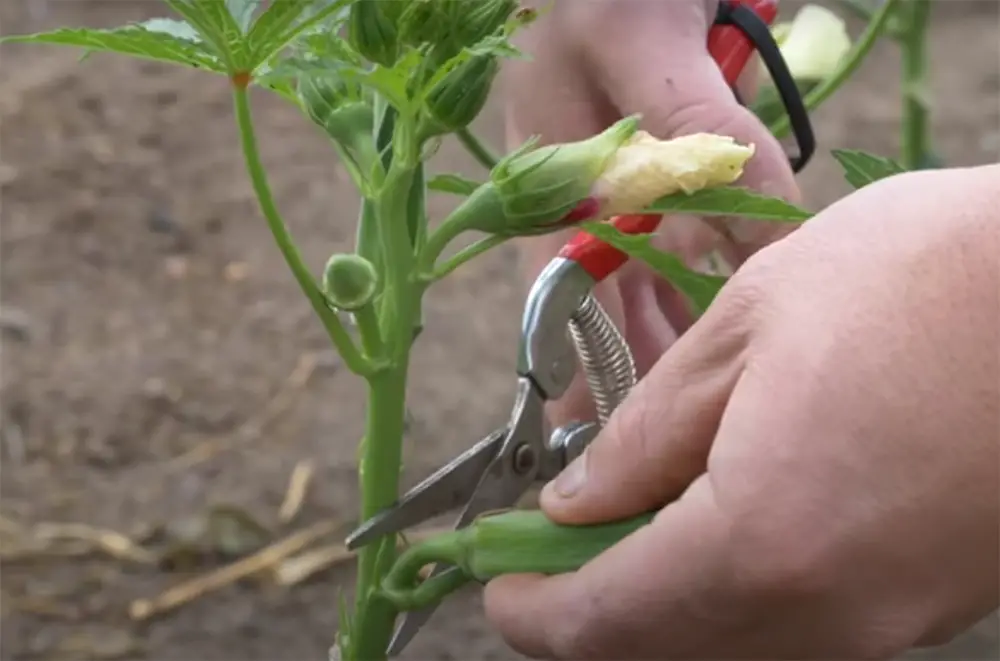Did you know that Okra is a scientific marvel? Scientists and horticulturists have long been mesmerized by the astounding ability of this plant to seemingly come back year after year. But, does it really? Can okra grow perennially through various climates or does it need to be replanted each season? This blog post sheds light on the scientifically proven facts about okra so that you can make an informed decision on your gardening journey.
What is okra and why it matters
One of the reasons why okra matters is its versatility in cooking. It can be cooked in a variety of ways, including stir-frying, grilling, and pickling. In some cultures, okra is even used to make soups and stews. Its mild taste makes it suitable for pairing with different spices and herbs.

Aside from its culinary uses, okra also has several health benefits. It is a good source of vitamins and minerals such as vitamin C, magnesium, and folate. It is also low in calories and high in fiber, making it a great addition to a healthy diet.
Moreover, okra contains a unique type of fiber called pectin, which has been shown to have cholesterol-lowering effects. This can help reduce the risk of heart disease and improve overall cardiovascular health.
In addition to its nutritional value, okra also has a significant impact on agriculture. It is a relatively low-maintenance and resilient crop that can thrive in hot and dry climates. This makes it an important food source for regions with harsh growing conditions.
Furthermore, okra is a popular ingredient in traditional medicine and is believed to have healing properties for various ailments. For example, the mucilage of the okra plant is used to soothe and lubricate the digestive tract, making it a common remedy for constipation.
In conclusion, okra is not just a simple vegetable, but a versatile and nutritious ingredient that has an impact on various aspects of our lives. Whether it be in the kitchen, on our plates, or in our health and well-being, this humble vegetable matters. So the next time you see okra at the grocery store or on a menu, give it a try and discover its many benefits for yourself [1].
How cold can okra tolerate?
Okra is a warm-season crop that thrives in hot and humid climates. It is commonly grown in tropical and subtropical regions, but it can also be grown in temperate regions as an annual plant.
If temperatures drop below 50°F (10°C) for an extended period, okra plants may experience frost damage and can even die. It is important to protect the plants from cold temperatures, especially during the germination and early growth stages.
To help your okra plants tolerate colder temperatures, you can use mulch to insulate the soil and keep it warm. Additionally, planting okra in raised beds or containers can also help regulate the temperature and protect the plants from cold winds.
In temperate regions where frost is a common occurrence, it is best to start okra seeds indoors and transplant them after the last frost date. This will ensure that the plants are not exposed to cold temperatures during their vulnerable stages.

If you live in a cooler climate and want to grow okra, consider using varieties that have been bred for colder climates. These varieties have a shorter growing season and can withstand lower temperatures, making them more suitable for colder regions.
Overall, while okra is a heat-loving plant, with proper care and precautions it can still be grown in cooler climates and tolerate colder temperatures. By following the tips mentioned above, you can enjoy fresh okra from your own garden no matter where you live [2].
Does okra come back next year?
It is well known that okra is a perennial plant. This means that it can regrow year after year without needing to be replanted. However, there are a few factors to consider when determining if okra will come back next year.
The climate and location
Okra, scientifically known as Abelmoschus esculentus, is a beloved vegetable that originated in warm and tropical regions. With its origins deeply rooted in these climates, it thrives in hot and humid conditions, making it a staple in the culinary traditions of many cultures.
If you happen to reside in an area blessed with mild winters and consistently warm temperatures, you are in luck! In such climates, your okra plant has a higher chance of surviving the winter and regenerating itself in the following year. This means you can relish the delightful taste of fresh okra and enjoy its bountiful harvest for an extended period.
However, for those who experience harsh winters or cooler temperatures, the survival of the okra plant through the winter becomes a challenging endeavor. In such regions, the colder conditions may hinder the plant’s growth and decrease the likelihood of it returning the following year.
Nevertheless, the resilience of okra should not be underestimated. In warmer climates, where the winter is more forgiving, okra has been known to endure throughout the winter months, defying the odds and continuing to reward gardeners with its delectable fruits well into the following year.
Proper care and maintenance
For okra to successfully regrow each year, it needs to be properly cared for and maintained. This includes providing regular watering, ensuring adequate fertilization, and implementing strategic pruning techniques to promote optimal and healthy growth. Neglecting these important tasks can result in a weaker plant that may struggle to survive the winter or exhibit limited growth potential in the subsequent year. By prioritizing the appropriate care and attention, you can nurture your okra plants to flourish and yield bountiful harvests year after year.
Pests and diseases

Like any other plant, okra is susceptible to a range of pests and diseases that can significantly impact its growth and survival. Common pests that can attack okra plants include aphids, spider mites, and root-knot nematodes. These pesky creatures can cause damage to the leaves, stems, and even the roots of the plant. However, it’s not just pests that pose a threat to okra; diseases such as fusarium wilt and powdery mildew can also be detrimental to the plant’s health.
Fusarium wilt is a fungal disease that can cause wilting, stunted growth, and yellowing of the leaves. It affects the vascular system of the plant, making it difficult for nutrients and water to reach the rest of the plant. Powdery mildew, on the other hand, is a fungal infection that appears as a white, powdery substance on the leaves, stems, and buds of the okra plant. This can hinder photosynthesis and weaken the overall health of the plant.
To ensure the longevity and productivity of your okra plants, it’s crucial to take preventative measures and address any pest or disease issues promptly. Regularly inspecting your plants, practicing good sanitation, and using organic pest control methods can help minimize the risk of infestation and disease. Additionally, providing proper care such as adequate sunlight, well-draining soil, and regular watering can contribute to the overall health and resilience of your okra plants.
The age of the plant
Younger okra plants, due to their relatively short exposure to environmental stressors, have a higher probability of regenerating in the subsequent year compared to their older counterparts. As the plant matures and accumulates more wear and tear, its overall productivity and vitality may gradually decline. Consequently, the ability to withstand adverse conditions or yield a plentiful harvest in the following year diminishes. It is important to note that this phenomenon is observed as a natural consequence of the aging process in okra plants.
Should okra be pruned?
Pruning okra plants is a highly debated topic among gardeners. Some argue that pruning can promote healthier growth and increase the yield of okra, while others believe it may hinder the plant’s ability to regrow in the following year.
Proponents of pruning argue that removing lateral branches and lower leaves, it allows for better air circulation, reduces the risk of diseases, and encourages the plant to focus its energy on producing more fruits. However, those against pruning believe that it can harm the plant’s structural integrity and cause unnecessary stress, ultimately resulting in weaker growth or even death of the plant.

In conclusion, okra is a resilient perennial plant that has the potential to come back year after year if given proper care, ideal growing conditions, and protection against pests and diseases. By understanding its needs and implementing appropriate care and maintenance techniques, you can enjoy the delicious taste of fresh okra for years to come. Whether you choose to prune or not, remember that each plant is unique, and experimentation may be necessary to find what works best for your okra plants [3].
What dishes can you cook with okra?
There are endless possibilities when it comes to cooking with okra. This versatile ingredient can be used in a variety of dishes, from soups and stews to salads and curries.
One popular dish that features okra is gumbo, a hearty Cajun stew that originated in Louisiana. Okra is often added towards the end of cooking to thicken the broth and add a unique flavor.
Another classic dish that includes okra is the Indian curry, bhindi masala. In this dish, okra is cooked with onions, tomatoes, and a blend of spices to create a flavorful and satisfying meal. For those looking for healthier options, okra can be grilled or roasted for a delicious side dish. It can also be pickled or used in salads for a fresh and crunchy addition.
But it’s not just savory dishes that okra shines in. It can also be used in desserts, such as okra fudge or okra ice cream. The slimy texture of okra may seem unusual in desserts, but it adds a unique and interesting element to the dish.
Additionally, okra is known for its health benefits. It is a good source of vitamin C, folate, and fiber. It also contains antioxidants that may help reduce inflammation and improve heart health.
So whether you’re looking to experiment with new flavors or incorporate more nutrients into your diet, okra is a must-try ingredient in the kitchen. So go ahead, get cooking with okra and discover all the delicious possibilities! So, why not give okra a try and add some variety to your meals? You may just find a new favorite dish.

FAQ
Does okra regrow?
One common question that often arises among people is whether okra can regrow after it has been harvested. And the answer to that is a resounding yes! Okra does indeed possess the remarkable ability to regrow, but certain conditions need to be met for this phenomenon to occur. By understanding these conditions and providing the necessary care, you can ensure that your harvested okra plants have a chance to regenerate and continue to delight you with their delicious pods.
Is okra an annual or a perennial?
Another common question is whether okra is an annual or a perennial plant. The simple answer is that it can be both! In areas with warm climates, such as the southern United States and parts of Asia, okra can act as a perennial and continue to grow year after year. However, in colder regions where temperatures drop below freezing, okra will die off at the end of the growing season and will need to be replanted in the spring, making it an annual plant. So, whether you can keep your okra plants year after year depends on where you live.
What are some tips for growing okra?
If you’re interested in growing your own okra, here are a few tips to help you get started:
- Choose the right location: Okra thrives in warm, sunny areas with well-draining soil. Make sure to select a spot in your garden that receives at least 6 hours of sunlight per day.
- Plant at the right time: For annual okra, plant seeds or seedlings after the last frost has passed and the soil has warmed up. Perennial okra can be planted in the spring or fall.
- Water regularly: Okra plants need consistently moist soil, so make sure to water them regularly.
- Fertilize sparingly: Okra doesn’t require much fertilizer, so it’s best to use a balanced fertilizer only once or twice during the growing season.
By following these tips and keeping an eye on your okra plants, you’ll soon be enjoying a bountiful harvest of this delicious and nutritious vegetable. And remember, if you take care to leave some pods on the plant after harvesting, you may even get a second round of okra later in the season!
What is the lifespan of an okra plant?
The lifespan of an okra plant can vary depending on various factors such as climate, care, and maintenance. In ideal conditions with proper care and regular harvesting, okra plants can live up to 3-4 years in warmer regions where they can act as perennials. However, in colder regions where temperatures drop below freezing, okra plants will only live for a single growing season, making them annual plants. With proper care and attention, okra plants can thrive and continue to provide delicious pods for years to come. So whether you’re planting annual or perennial okra, make sure to give them the love and care they need for a healthy and long life.
How many times can you harvest okra?
The number of times you can harvest okra will depend on the lifespan of your plants and how well you care for them. As mentioned before, in warmer regions where okra can act as a perennial, you can potentially harvest it multiple times throughout its lifespan. In these cases, it’s important to regularly prune and maintain the plant to encourage new growth and pod production.
On the other hand, in colder regions where okra is an annual plant, you will only be able to harvest it once per growing season. However, with proper care and maintenance, you can still get a significant yield from your plants during this single harvest. So keep an eye on your okra plants and make sure to provide them with the necessary care for a successful harvest.
Useful Video: How To Make Old Okra Plant More Productive again
Conclusion Paragraph
So, does okra come back every year? Okra plant is a perennial plant that can grow back every year, especially in warmer climates. However, due to its sensitivity to cold temperatures, it is usually grown as an annual plant in colder regions. But with proper care and protection from frost, okra plants can survive the winter and regrow from the same roots the following year. In fact, some gardeners even suggest pruning the tops of the okra plants and covering them with mulch in the fall to help protect the roots from freezing temperatures.
References:
- https://www.webmd.com/diet/health-benefits-okra
- https://gardenguide4all.com/will-okra-survive-winter/
- https://www.thespruce.com/growing-okra-in-the-backyard-vegetable-garden-1403473










Leave a Reply
View Comments